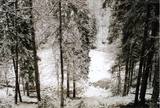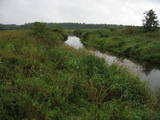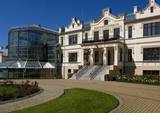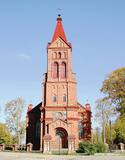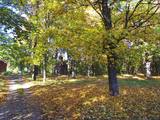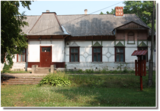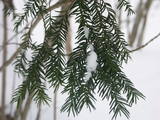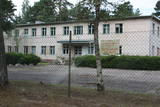| Nr | Nosaukums | Apraksts |
|---|---|---|
|
Šajā ceļojumā skatīsiet piejūras ainavas, uzzināsiet interesantus faktus par seno zvejnieka arodu un baudīsiet tradicionālus zivju ēdienus. Ceļojuma pirmais pieturas punkts, braucot no Rīgas, ir Ragaciems. Šeit atrodas populārais Ragaciema zivju tirgus, kur vienmēr plašā klāstā nopērkamas kūpinātas jūras zivis. Jūras krastā apskatāms vietējo zvejnieku atjaunotais Ragaciema sedums – kādreizējā zvejas laivu piestātne ar tīklu būdām. Braucot tālāk, Rojā, grupām no 15 personām ir iespēja baudīt programmu „Zvejnieka cienasts” ar stāstiem no zvejnieku dzīves, dziesmām, dejām, zvejnieku spēlēm, un, protams, mielastu. Turpinājumā Kolkasrags un Slīteres nacionālais parks, kur zvejnieku ciemos joprojām vīri iet jūrā ar zvejas laivām un kūp žāvētavu dūmi. Ceļotāji no zvejniekiem var nopirkt svaigi kūpinātas zivis. Ceļā uz Ventspili ir vērts aplūkot Irbenes radioteleskopu, kam ir sava militārā pagātne, taču mūsdienās tas tiek izmantots zinātnes mērķiem. Turpinot ceļu uz Liepāju, var izbaudīt sērfotāju iecienītās Pāvilostas šarmu, Jūrkalnes stāvkrasta ainavas un nogaršot svaigi ceptu, koka abrā ar rokām mīcītu maizi lauku saimniecībā. Ceļā ieplānojiet arī Liepāju – Ņujorkas Knicks basketbolista Kristapa Porziņģa dzimto pilsētu. |
||
|
Atrodas Stendes dienviddaļā. Piedāvā maltītes visām ēdienreizēm. Konditoreja, kulinārija. Āra terase un labiekārtota apkaime. |
||
|
Tās celtniecību uzsāka 1830. g. par muižkunga Ludviga Šabanska ziedotajiem līdzekļiem. No laukakmeņiem celtajā baroka stila dievnamā, kuru apjož atjaunots akmens žogs, atrodas svētbildes „ Jēzus sirds", „Kristus ciešanas", „Svētais Jāzeps". Ikdienā apskatāma no ārpuses. |
||
|
Atrodas Brīvības ielā 125 a. Pastaigā pa pilsētas centru ir vērts pievērst uzmanību pilsētas vecākajai ēkai, kas atrodas netālu no Jēkabpils Sv. Miķeļa luterāņu baznīcas (draudzes īpašums, 1769. g. uzsākta tās celtniecība). Koka ēka celta 1808. gadā. |
||
|
Pauguriem un ezeriem bagāta teritorija Dzūkijas augstienes Z daļā. Interesantākā tūristu piesaiste ir Velna dobe (Velnio duobė) – līdz 40 m dziļa un līdz 200 m plata piltuvveida bedre, kuras izcelsmi vairumā gadījumu saista ar ledāja darbību.
|
||
|
Atmiņas no kādreizējā
Vissavienības nozīmes kūrorta. Uz ēkas sienas
saglabājusies aptiekas tēmai veltīta simbolika.
|
||
|
Palieņu pļavas starp Rūjienu un Rūjas ieteku Burtnieku ezerā, kurām raksturīga liela augu un putnu sugu daudzveidība. Tās robežojas ar bijušiem Rūjas zivju dīķiem, kas šobrīd aizaug ar mežu. Rūjas palienes var vērot gan braucot ar laivu pa Rūju, gan arī no ceļa, kas ved uz minētajiem dīķiem. Tur izvietots informācijas stends.
|
||
|
Atrodas pie tilta (Akadēmijas iela 1) pār Lielupi. 1574. g. pēc Kurzemes – Zemgales hercoga Gotharda Ketlera pavēles uzsāk jaunas baznīcas celtniecību. Dievnama tornis tapa laikā no 1686. g. – 1688. g., bet 1862. g. to paaugstināja līdz 80,5 m. Baznīca nodega padomju aviācijas uzlidojuma laikā 1944. g. 27. jūlijā. 1954. g. Padomju armijas sapieri uzspridzināja ēkas atliekas. 2009. g. sākās baznīcas torņa rekonstrukcija, un šobrīd tajā izveidots izcils interaktīvais muzejs (īpaši draudzīgs bērniem) un stiklota skatu platforma. |
||
|
Muižas komplekss sāka veidoties 15. gs. beigās, - 16. gs. sākumā. Ievērojamas izmaiņas norisinājās 19. gs., kad tā kļuva par grāfa Tiškeviča īpašumu. 1875. g. iekārtotais Ziemas dārzs ir lielākais Austrumeiropā. Kretingas muižas parks – viens no senākajiem Lietuvā 16. – 17.gs. muižas parkiem, kas saglabājies līdz mūsdienām. Tas ir jaukta stila parks, aptverot 23 ha laukumu. Kretingas muižas dienvidu daļā, bijušajā augļu dārza vietā atrodams Astronomiskais kalendārs ar Saules pulksteni, iekopts dzīvžogs, alejas, puķu dobes un akmeņdārzi ar rūpīgi iekoptām dāliju, peoniju, tulpju un rožu kolekcijām, gājēju taciņas, atpūtas laukumi. Atjaunotā muižas strūklaka kļuvusi īpaši pilsētas viesu iemīļota atpūtas vieta. |
||
|
Ciskādu Sv. Jāņa Kristītāja Romas katoļu baznīca uzbūvēta ap 1900. gadu
no akmens un sarkanķieģeļiem romāņu stilā, ievērojama ar gleznu „Madonna
ar bērnu’’, krucifiksu un ērģelēm.
|
||
|
Pušas muiža bija muižnieku Šadursku īpašums. Līdz mūsdienām saglabājies Pušas muižas terasveida parks – valsts nozīmes arhitektūras piemineklis, bet Pušas muižas kapela – vietējās nozīmes arhitektūras piemineklis. Netālu no parka atrodas Šadursku dzimtas kapi. Pušas muiža apskatāma Broces 1797. g. zīmējumā. |
||
|
Skaita (> 80, pēc citiem avotiem ~ 250) un vizuālā ziņā vieni no lielākajiem un izteiksmīgākajiem Igaunijas senkapiem. Tie ir lieli akmens apļi, kuru vidū atrodas viens vai vairāki no akmeņiem veidoti „zārki”, kuros guldīja nelaiķi. Senkapi aptver laika posmu no dzelzs līdz bronzas laikmetam. To apskates nolūkā ir izveidota marķēta taka. Vilka pauguri ir uzskatāmi par izcilu piemēru, kādā veidā senkapus var izmantot par vēstures izziņas objektu. |
||
|
No arhitektoniskā viedokļa Zosnas muiža ir ļoti interesants objekts, jo tās kungu māja ir celta pildrežģa tehnikā, kas ir Latgalē reti sastopams gadījums. Muižas pašreizējā apbūve veidojusies 19. gs. beigās un muižas kungu māja celta 1870. g. historisma stilā pēc kņazu Goļicinu pasūtījuma. Ēkā ir daļēji saglabājies interjers - durvis, griestu rozetes un gaiteņu flīžu segums. 1820. g. celtā kučiera māja ir vecākā muižas kompleksa ēka. Vēl nesen šeit atradās Lūznavas pagasta bibliotēka, bet šobrīd muižas ēkas apskatāmas tikai no ārpuses. Zosnas muižu ieskauj neliels parks, kas stiepjas līdz pat Rāznas ezera krastam, līdz kuram varam nokļūt pa senām akmens kāpnēm un turpināt nelielu pastaigu pa kokiem ieskautu taku. |
||
|
Ar mežu klāta teritorija, kas veidota reliktas aizsargājamas augu sugas - parastās īves u.c. augu aizsardzībai. Teritorija nav piemērota apmeklējumiem, jo apmeklētājs bez vides zināšanām šeit ieraudzīs „parastu” mežu.
|
||
|
Harilaidas galā no jūras ūdens paceļas 26 m augstā Kīpsāres bāka – viena no neparastākajām Igaunijas bākām. Tā celta 1933. g., kad jūra no bākas atradās ~ 100 m attālumā. Krastu noskalošanas rezultātā tā tagad ir viļņu ieskauta. |
||
|
Pašā Mulgimaa sirdī ierīkota ģimenes alusdarītava, kur ciena vietējos ēdienus un dzērienus. Apmeklētāji var vērot alus darīšanas procesu, kā arī nogaršot dažādas Mulgi alus šķirnes. |
||
|
Kandavas keramikas ceplī keramiķe Linda Priedniece interesentiem piedāvā iespēju pašiem iemēģināt roku podnieka darbā un piedalīties cepļa atvēršanās pasākumā. Keramikas darbu pasūtīšana un iegāde. |
||
|
Atrodas skaistā vietā – pašā Daugavas krastā. Ēdina, klāj galdus, piedāvā braucienus ar kuģīti pa Daugavu. |
||
|
Arī šobrīd kādreizējā Pāvilostas krasta robežapsardzes teritorija ir civilpersonām slēgta un pēc publiski pieejamās informācijas tiek izmantota jūras kara spēku vajadzībām.
|
||
|
Eiropā un, domājams, pasaulē unikāls militāro būvju komplekss, kas izvietots starp Baltijas jūru un Liepājas un Tosmares ezeriem. Cietoksnis izmaksāja 45 miljonus zelta rubļus, un to sāka būvēt 19. gs. beigās pēc Krievijas cara Aleksandra III pavēles. Tas sastāvēja no kara pilsētiņas un fortifikācijas būvēm - lielgabalu pozīcijām, bunkuriem, pulvera pagrabiem, kanālu sistēmas, šaursliežu dzelzceļa u.c. 1908. g. saskaņā ar jauno Krievijas aizsardzības koncepciju cietoksnis beidza funkcionēt, jo tā celtniecību atzina par stratēģisku kļūdu. Pazemes būves un pagrabus 1. pasaules kara laikā mēģināja uzspridzināt, taču tas īsti neizdevās. Tā atsevišķiem elementiem bija liela nozīme Latvijas atbrīvošanas cīņās. Līdz mūsdienām saglabājušās atsevišķas cietokšņa daļas - Ziemeļu forti, Vidusforts, Austrumu forts, Dienvidu forts, krasta aizsardzības baterijas (Nr. 23., 3.), Redāns, Lunete u.c. Lielākā daļa no tiem nav labiekārtoti, tādēļ to atsevišķu daļu apskate var būt bīstama. Bijušā cietokšņa ziemeļdaļa ietver Karostu, kas piedzīvojusi septiņas dažādas armijas un varas. Padomju laikos Karosta bija slēgtā zona un civilpersonām nepieejama. Te atrodas daudzi izcili militārās vēstures pieminekļi un tūristu iecienītais Karostas cietums. |
||




